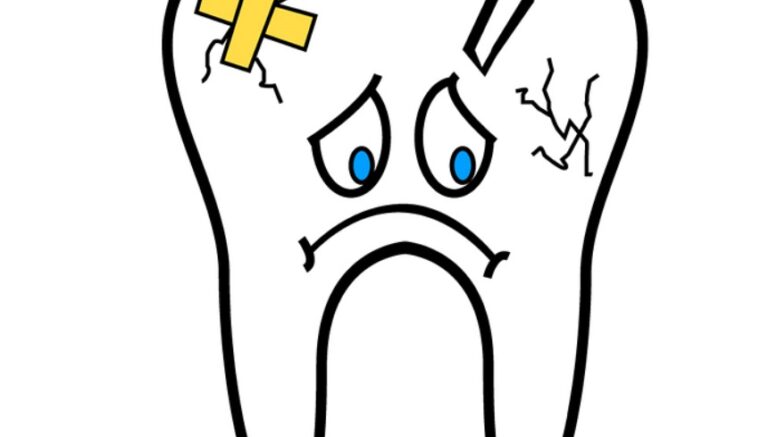Most people, at some point in life, get a cavity or two. Cavities, also called dental caries or tooth decay, are the consequence of the breakdown of hard tissues in the tooth. The breakdown is caused by acids produced by the bacteria that thrive in plaque. The presence of bacteria is, in fact, a normal occurrence in the human body. It is only when the normal bacterial balance is disrupted that diseases like dental caries occur. If you need a good dentist, call the dentist south barrington il.
What causes tooth cavities?
According to experts at Singapore’s most detailed dental health portal Dentaleh.com, there is a specific strain of bacteria that causes tooth cavities. It is called Streptococcus Mutans (S.Mutans), a relatively harmless bacteria that live in our mouths. When this bacteria multiplies at a rapid pace, it sticks to the outer tooth surface and forms plaque. Plaque is a soft, sticky film made up of bacteria and sugary and starchy foods. S. Mutans and other bacteria are attracted to plaque because it serves as the ideal environment for them to grow and multiply.
The acid from bacteria is so strong that it is capable of can liquefy the enamel or outer layer of the tooth’s calcium and minerals. This process is called decalcification. When the tooth enamel starts to get weak, holes or cavities become present. In simple terms, the development of dental caries is actually a process that is caused by several factors.
There are different things that work together in a multifactorial process. For example, the tooth may have developed a condition that damaged it and made it prone to getting a tooth cavity. It may be also caused by something that might have caused an imbalance in the mouth that allowed bacteria to thrive. When it comes to cavities, all it takes is the perfect mishmash of certain factors and time.
Contributing factors for the formation of cavities
To get a better understanding of the process, let us take a close look at the most vital contributing factors:
Enamel quality
The durability and amount of enamel is a huge factor. A great number of children are born with fewer minerals in their tooth enamel, thus increasing its risk of developing decay. Occurrences like this may be attributed to genetics or abnormal conditions while in the womb or during the infancy stage.
Tooth structure
Teeth have grooves where food particles can get trapped. This is where plaque piles up and eventually attracts caries, too. According to research from the American Academy of Pediatric Dentists (AAPD), about 90% of caries found in children develop in the grooved areas of the tooth.
Transmission of bacteria
Huge quantities of S. Mutans and other bacteria in young children can place them at high risk of developing cavities. Bacteria have two different sources: first is a ‘vertical’ source wherein the guardian passes it to the child and second, the ‘horizontal’ source that comes from sharing objects (e.g. cups, pacifiers, and utensils) between children.
Quantity and Quality of Saliva
The saliva in our mouth is important in keeping fragments off surfaces in the mouth and likewise, it contains tremendous amounts of calcium and other minerals that are appropriate for demineralized teeth. But if there is too much or too little saliva, adverse effects may occur.
Mouth Muscles and Tongue
When chewing food, the mouth and the tongue’s muscles help in maintaining the cleanliness of teeth surfaces. But for children with neurodevelopmental and muscular conditions, the function of oral muscles ae limited.
Crowding of teeth
Crowded or teeth that overlap are difficult to clean. Teeth that are misaligned and tightly packed together are more likely to trap food in-between spaces. This creates hidings spots for bacteria to thrive and cause cavities.
Sugar in Diet
The general rule is simple: the stickier the food is, the longer it will stick to the teeth. It also means that the bacteria will have more time to carry out its attack. If a child constantly consumes sugary foods, the bacteria will always remain active and this is bad because sugar and other fermentable carbohydrates can cause damage to the surface of a tooth.
Medications
The development of childhood caries can also be attributed to certain types of medicines. Extended use of an inhaler for asthma, for example, affects the flow of saliva and as we know, when the saliva’s ability to clean is reduced, dental caries will proliferate. In addition to that, a lot of children’s medication is packed with high dosages of sugar to make them palatable to children. Imagine if these sugary coughs or medicines to combat allergens are given to a child repeatedly throughout daytime and nighttime; the bacteria will have a lot of sugar to feast on! Nutritional drinks and gummy vitamins are also full of sugar so it would be better to limit the intake of such.
Dental plaque
Dental plaque attracts bacteria like no other and the only way to combat this is to maintain the teeth’ cleanliness by brushing and flossing. When we brush and floss, the number of bacteria in the mouth decreases, and ultimately, the damage that they can do on the teeth surfaces are reduced, too.
